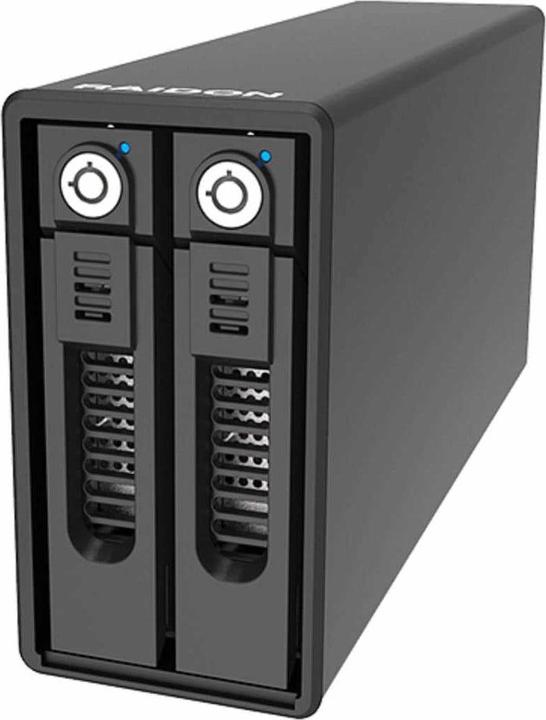
Raidon GR3660-BA31
3.5", 2.5"

Raidon GR3660-BA31
3.5", 2.5"
Hello, I'll try to be clear. Is the RAID function, the one that copies in a mirror, just a backup that is used to reinstall in the event of a problem or a change of computer? Or can you also navigate in it, like u. External hard disk and each action (adding a photo, deleting a file) is also executed on the other disk?
Behaves as RAID 1 like a normal data carrier. Files can be deleted, added, renamed, etc.
This enclosure can support RAID 0, RAID 1 or JBOD according to specifications.
With RAID 0, the software in the enclosure distributes the data across both disks. To do this, both discs must be the same size. This means no data redundancy, but high speed and you retain almost the entire capacity of the sum of both drives. For the operating system, the enclosure appears as ONE SINGLE disc. If the single drive fails, all data is usually lost, as it is distributed across the drives according to an algorithm in the software in the enclosure.
It might be possible to set up two such enclosures as mirrored units using RAID 1 software in the computer, but this would almost certainly be slower. Please search the Internet for documentation on this. Both enclosures would also have to contain the same discs.
With RAID 1, all data on the first disc is mirrored to the second.
This means that the enclosure appears to the operating system as ONE SINGLE disc. To do this, both disks must be the same size. So you only have the capacity of one disc available. You can save on it as on a normal hard drive, except that every change on the first hard drive is updated (mirrored) on the second by the software in the housing. The mirrored disc can therefore not be accessed directly by the operating system.
Mirroring is therefore a safety feature, because if one of the disks fails, you still have the data on the other.
With JBOD (Just a Bunch Of Disks), both discs are visible separately on the computer with their own label or drive letter and you can then access one or the other from the operating system. It's like having two drive enclosures in one. You can therefore install discs of different capacities.
However, no data is then mirrored, of course. If one of the discs fails, its data is lost.
It might be possible to set up two such enclosures as mirrored units using RAID 1 software in the computer, but this would almost certainly be slower. Please search the Internet for documentation on this. Both enclosures would also have to contain the same disc structure.
==> This enclosure can accommodate 3.5" and 2.5" drives and, importantly, only SATA III drives.